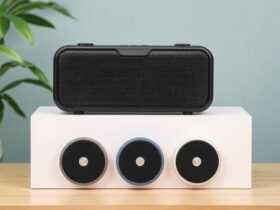Smart locks have revolutionized home security, offering convenience and advanced features that traditional locks simply cannot match. But as their adoption grows, so do questions about their reliability. Are these devices truly foolproof, or do they harbor vulnerabilities that could compromise your safety? Let’s dive into the technology, risks, benefits, and future of smart locks to uncover the truth.
Understanding Smart Lock Technology
Bold Smart locks rely on wireless protocols like Bluetooth, Wi-Fi, or Zigbee to connect with smartphones, voice assistants, and home automation systems. Unlike traditional locks, which depend solely on physical keys, smart locks use encryption (e.g., AES-256) to secure communication between devices, reducing the risk of lock picking or key duplication.
Key features include:
- Remote Access: Unlock doors via apps, even when you’re miles away.
- Multi-Factor Authentication: Options like fingerprint scanning (eufy C220), facial recognition (Lockly Visage Zeno), PIN codes, and RFID cards.
- Integration with Smart Homes: Compatibility with Alexa, Google Home, and Apple HomeKit (e.g., Level Lock+ Connect) enables voice commands and automation.
However, the reliance on software introduces risks. For instance, outdated firmware or weak encryption can expose locks to hacking. Reputable brands like Schlage and Yale address these issues with frequent updates and certifications like BHMA Grade 1 or ANSI Grade 1 standards.
The Vulnerabilities: Where Smart Locks Fall Short
No technology is flawless, and Smart locks are no exception. Here are the primary risks:
- Cybersecurity Threats
Hackers exploit weak encryption or unpatched software bugs. For example, Bluetooth-only locks (like Wyze Lock Bolt) lack Wi-Fi security layers, making them easier to intercept. Even high-end models with facial recognition, such as the Denler DFLv3, can be tricked by sophisticated spoofing techniques. - Physical Tampering
While brands like Kwikset Halo Select use hardened materials, cheaper models may succumb to brute-force attacks. The absence of auto-lock features (e.g., eufy C210) also leaves doors vulnerable if users forget to secure them manually. - Power and Connectivity Failures
Dead batteries can lock users out. Solutions like Yale’s 9V battery backup or eufy E330’s rechargeable battery mitigate this, but not all models include these features. - Privacy Concerns
Data breaches in apps or cloud platforms (e.g., Sifely Smart Lock’s unclear data policy) expose user activity logs and access patterns.
Benefits Outweigh the Risks
Despite vulnerabilities, smart locks offer unparalleled advantages:
- Convenience
Grant temporary access to guests via virtual keys (Lockly Secure Plus) or use geofencing to auto-unlock doors when your phone approaches (Kwikset Halo Select). - Enhanced Monitoring
Activity logs track entries and exits, ideal for Airbnb hosts or families (e.g., Schlage Encode Smart Wi-Fi Deadbolt). - Deterrent to Traditional Break-Ins
Biometric authentication (eufy E330) and tamper alerts make bypassing these locks harder than picking traditional deadbolts. - Integration with Security Ecosystems
Pair locks with cameras (eufy E330’s 2K video doorbell) or alarms for layered protection.
Expert Insights: The Future of Smart Locks
Industry leaders are addressing current limitations through innovation:
- Biometric Advancements: 3D facial recognition (SaifSmart) and vein-pattern scanning are reducing spoofing risks.
- Matter Protocol: New standards like Matter over Thread (Level Lock+ Connect) ensure cross-platform compatibility and better battery life.
- Blockchain Encryption: Companies like BlackBerry (via Cylance®) are exploring decentralized security models to thwart hacking attempts.
- AI-Powered Threat Detection: Locks like eufy E330 use AI to distinguish between humans, pets, and potential intruders.
Experts agree that while no lock is 100% foolproof, the combination of hardware robustness and software vigilance can minimize risks significantly.
Choosing the Right Smart Lock
To balance security and convenience, consider these top models:
- Level Lock+ Connect: Best for smart home integration, with Thread radio and Matter certification.
- eufy Security E330: Combines a 2K camera, fingerprint scanner, and rechargeable battery.
- Schlage Encode Smart Wi-Fi Deadbolt: ANSI Grade 1 certified with fingerprint-resistant keypads.
- Kwikset Halo Select: Budget-friendly Wi-Fi and Matter compatibility.
- Lockly Visage Zeno: High-end facial recognition with multi-method access.
Mitigating Risks: Best Practices
- Regular Updates: Install firmware patches promptly (e.g., Schlage’s frequent updates).
- Multi-Factor Authentication: Use biometrics + PIN codes (eufy C220).
- Physical Backups: Opt for models with mechanical keys (Godrej Catus Connect).
- Network Security: Secure Wi-Fi networks with strong passwords and firewalls.
Conclusion: Are They Foolproof?
The answer is no—smart locks are not impervious to all threats. However, their evolving technology, when paired with mindful usage, offers a significant upgrade over traditional locks. By selecting reputable brands, staying updated on security trends, and layering smart locks with other security systems, homeowners can achieve a robust defense against most threats. As BlackBerry’s 40-year legacy in security shows, innovation and vigilance are key to staying ahead of risks.
In the end, smart locks are a powerful tool in modern security—if you know their limits and leverage their strengths.








Find Us on Socials